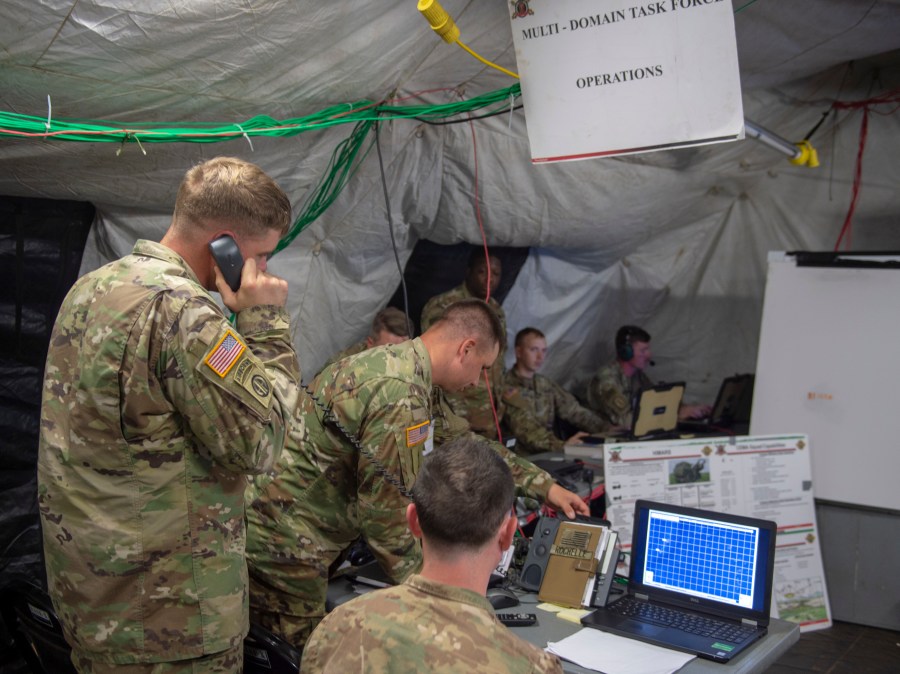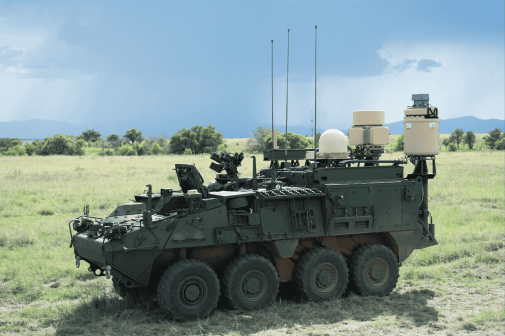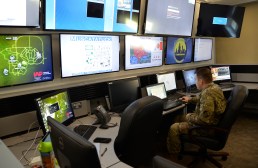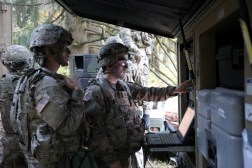Army set to field new cyber tool to improve situational awareness

The Army last month made a fielding decision for a critical cyber tool that will allow commanders to have a better understanding of their own cyber terrain.
The tool, Cyber Situational Understanding, is specifically designed for ground commanders to have better insight into the cyber and electromagnetic landscape to make more informed decisions. The tool is not meant to be used for cyberspace operations.
The Army in June approved fielding for the first increment of the program — which is focused on improving situational awareness of the friendly network and threats to it — with the first unit equipped in the August-September timeframe, according to program officials.
Division and corps are the priority echelons to receive this capability first with 11 such units slated to get the first increment from fourth quarter this year to third quarter next year, Lt. Col. Scott Shaffer, product lead for Mission Command Cyber at Program Executive Office Command, Control, Communications-Tactical, told FedScoop in a recent interview. That includes activity-duty and National Guard units.
As the Army is posturing to compete with more sophisticated adversaries, it is making the division the primary unit of action rather than the brigade combat team as seen during the global war on terror.
“For us, just as with the Army, the division is going to be our primary unit of action for Cyber SU,” Shaffer said. “Some of the information that Cyber SU receives is typically at a higher level anyways, so the challenge for us is collecting it at the right echelons and then sharing down at the lower levels as possible. Cyber SU could go to brigades as well. We’re just trying to find that right balance and what makes sense.”
Shaffer said the plan is still to develop and deliver on three increments or capability drops for the program. The team is currently working on wrapping development of the second capability drop, which will focus on seeing the battlespace. It will conclude development in the September-October timeframe and roll into a developmental test in November or December. After that, there will be an operational assessment with the 1st Armored Division.
The team has been working hand in hand with soldiers to get their perspective during the build process to ensure it meets their needs.
“A lot of the feedback we get is not necessarily how Cyber SU is tied into certain data sources, because I think we have a pretty good grasp, at least right now, for the initial capability in the friendly picture. We have a pretty good idea of the data sources that need to feed and be processed and analyzed in Cyber SU,” Shaffer said. “This is where user feedback really comes into play, is how do we want to present the data in a meaningful and a logical fashion where it’s actionable or soldiers and staff and commanders, if you will, can make a decision off of.”
Cyber SU is the first program specifically built for and with the Command Post Computing Environment (CPCE), a web-enabled system that will consolidate current mission systems and programs into a single user interface at the command post to provide a common operational picture.
While other systems will be folded into CPCE, to include the Advanced Field Artillery Tactical Data System (AFATADS), those platforms were previously standalone while Cyber SU is being built organically into it.
“We spent a lot of time developing the software. It was new. We spent a lot of time developing Cyber SU issue to function and operate inside the tactical common operating picture or single pane of glass, if you will, which is Command Post Computing Environment for us,” Shaffer said. “In my mind Cyber SU is paving the path for convergence for the Army. As far as I know, there’s probably other programs too, but it’s the first program to be fully converged with the Command Post Computing Environment … I think it’s nice to be a trendsetter or paving the path. I can appreciate some of the experiences I’m getting just down that path.”
CPCE recently completed Milestone B for its Increment 2 in June as well, which is the beginning of the engineering and manufacturing development phase.
This increment will field as part of the Army’s Capability Set 23. These capability sets are incremental builds in two-year timelines for the Army’s integrated tactical network. Capability Set 21 was primarily designed for infantry brigades, Capability Set 23 is focused on Stryker brigades, and Capability Set 25 is focused on armored brigades.
Officials explained to FedScoop in a trip to Aberdeen Proving Ground in June that Increment 2 includes a tactical data fabric, logistics requirements and converging applications.
The CPCE team has been working with I Corps at Joint Base Lewis-McChord in some of their exercises to gear up for Project Convergence 22, when the Army will experiment with a variety of technology.
In regards to the tactical data fabric, officials explained they are working to integrate existing Army technologies. This includes working with Army Cyber Command on a tactical instantiation of its big data platform called Gabriel Nimbus.
Several so-called big data platforms exist across U.S. Cyber Command, the Defense Information Systems Agency, Army Cyber Command and the Marine Corps. They are essentially hybrid cloud environments that allow for storage, computation and analytics across networked sensors. When forces conduct cyber missions, they collect data and use high-powered analytics to make sense of it. Big data platforms do just that, but also share that analysis in an easy-to-access repository for other forces.
The idea here is to convert the Army’s system to one more tactically focused for ground forces, rather than stationary cyber forces conducting missions from faraway locations.
There is an agreement between ARCYBER and Program Executive Office Enterprise Information Systems to provide that capability to Army Pacific to familiarize itself with it and eventually take it to Project Convergence.
The goal is to pull data from various sources to get a persistent data layer and present a better picture so the right feeds of information go to the right people in a timely manner to make faster decisions.
The other effort involves merging something called Project Rainmaker, which was an Army science and technology effort that explored the concept of data fabric. Officials have previously said it has been helpful in allowing the Army to understand the blueprint so it can start to translate that into the procurement phase and find the balance between commercial solutions and government technology.






